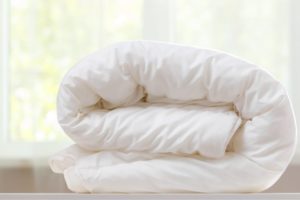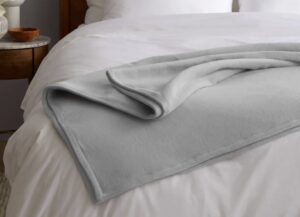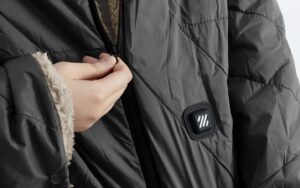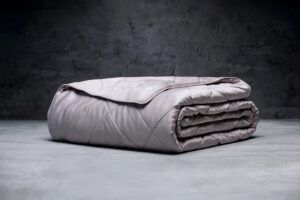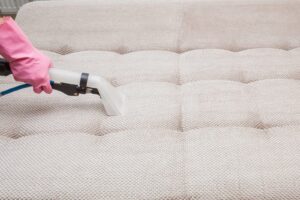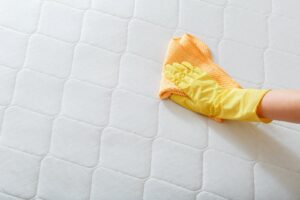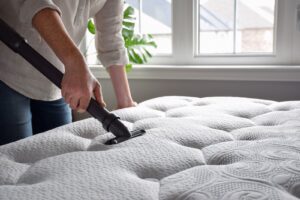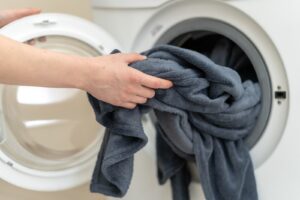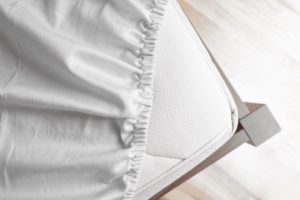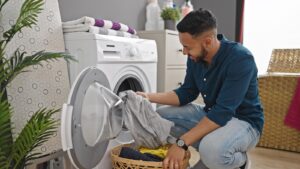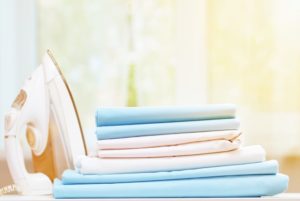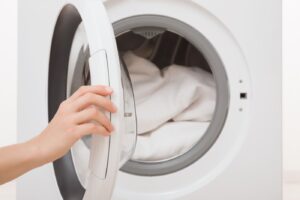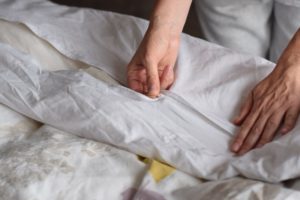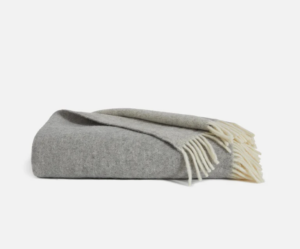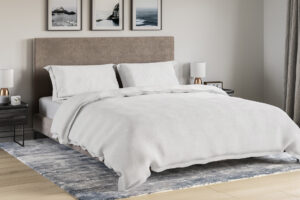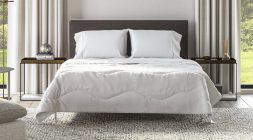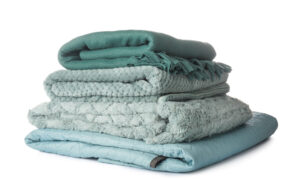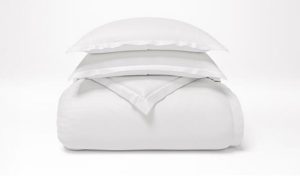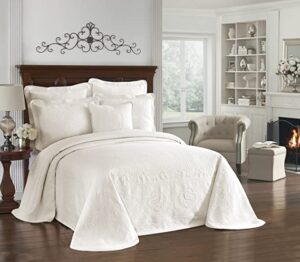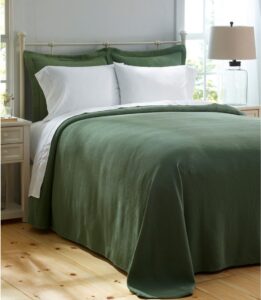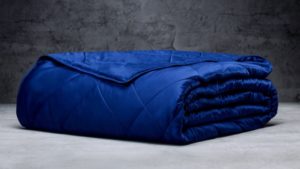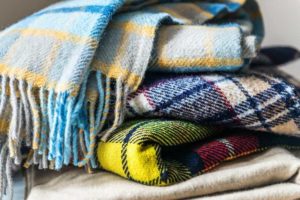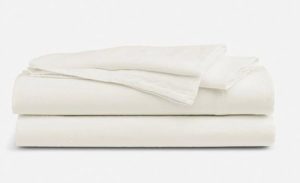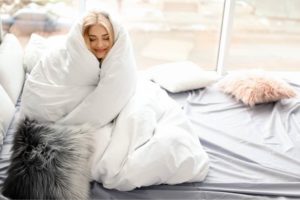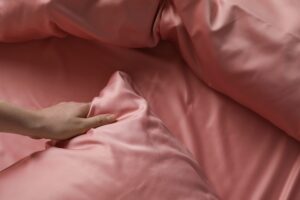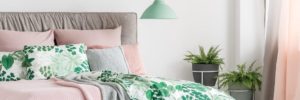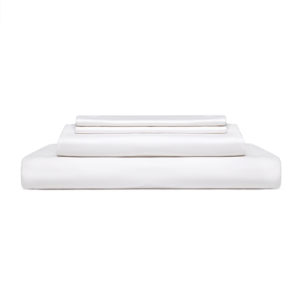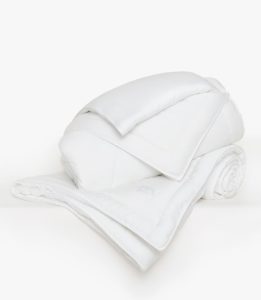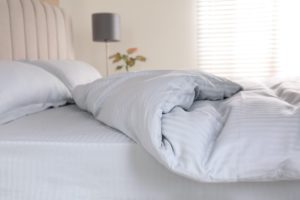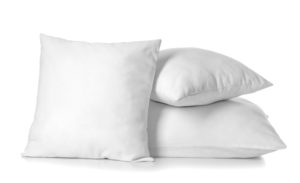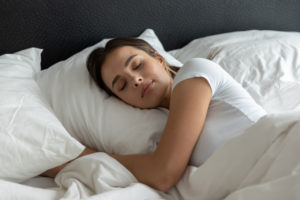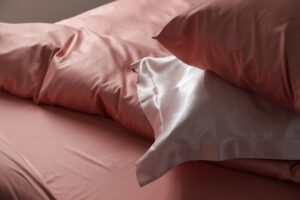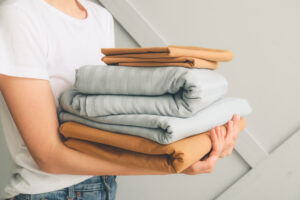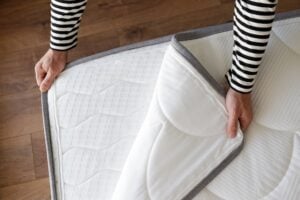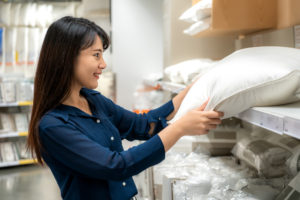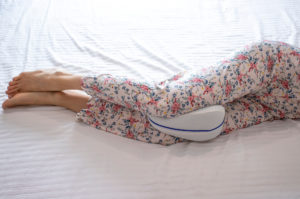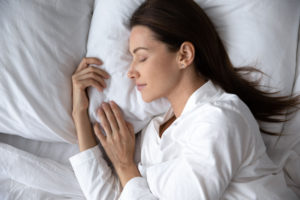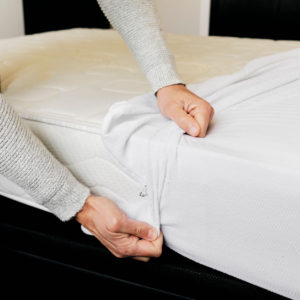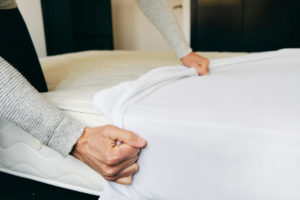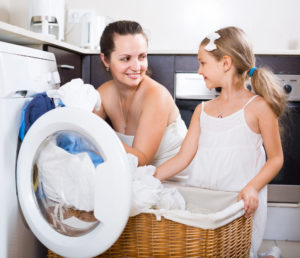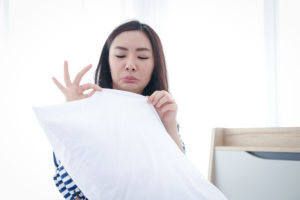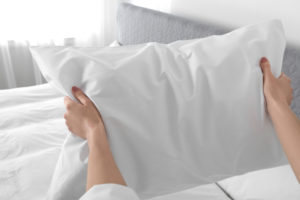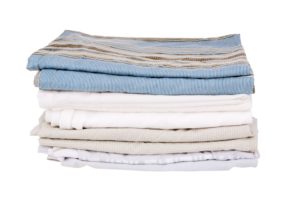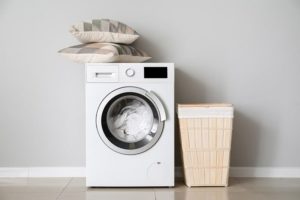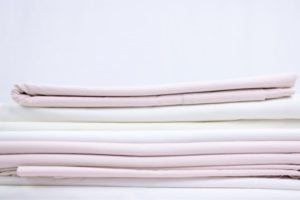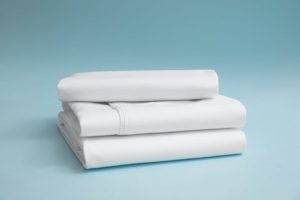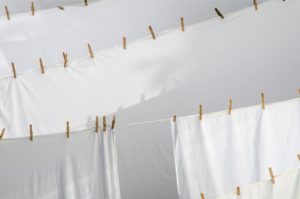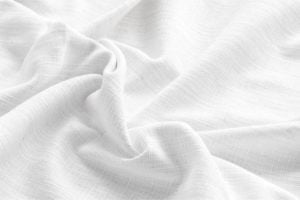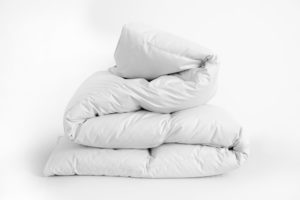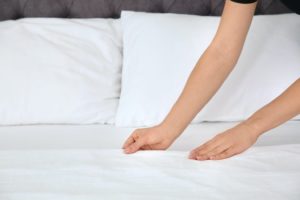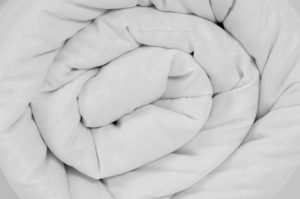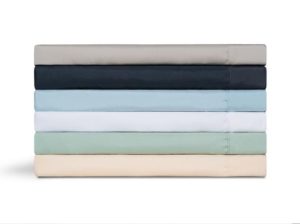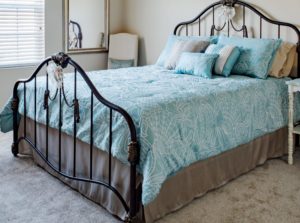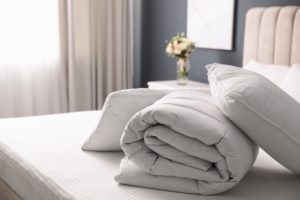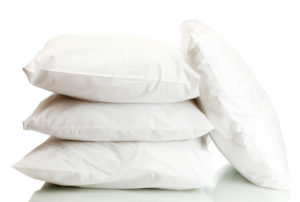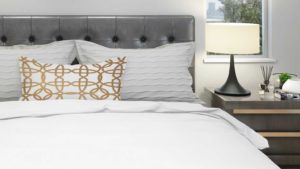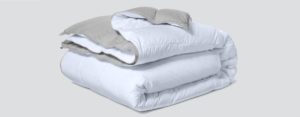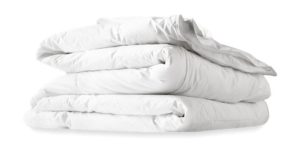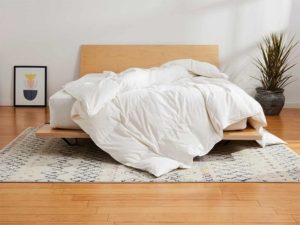Egyptian Cotton vs Sateen Sheets
Sheets come into direct contact with the body, so they can affect the quality and comfort of your sleep. However, many shoppers don’t put as much thought into selecting the best sheets as they would into selecting their mattress.
There are many different types of sheets on the market, and each has its own potential pros and cons. Selecting the right category of sheets for you may be equally as important as finding the right product.
This guide focuses on Egyptian cotton sheets vs. sateen sheets. Both of these popular options can have a soft and luxurious feel, but subtle differences may make one preferable for you. Below, we’ll discuss their construction, pricing, pros and cons, performance, and more.
Egyptian Cotton Sheets
Egyptian cotton sheets are typically considered some of the most premium offerings on the market. However, shoppers should also differentiate between Egyptian cotton, long-staple cotton, and other kinds of cotton.
As the name would suggest, Egyptian cotton is harvested in Egypt. This variety of extra-long staple cotton is traditionally picked by hand to maintain the length of the fibers. Long fibers help craft a smoother, more durable fabric.
This high-quality material also traditionally carries a higher price tag, though some lower-priced options also use the term “Egyptian cotton.” To be truly authentic, the cotton in the sheets should come from sources with certification from the Cotton Egypt Association. The best Egyptian cotton sheets can be extraordinarily soft, breathable, and durable while infusing your sleep surface with a luxury-hotel feel.
Other types of long-staple and extra-long staple cotton can feel similarly luxurious at a fraction of the cost. Many sleepers balance their desire for affordability and comfort by finding alternate options, like the popular extra-long staple Pima cotton. Sheets made of cotton that is not a long- or extra-long staple variety may still be comfortable, but they are unlikely to be as soft and durable.
Sheets made of any type of cotton can use different weaves, which will further affect their finish, draping, feel, and breathability.
Pros & Cons
Egyptian Cotton Sheets
| Pros | Cons |
|---|---|
| Breathable and absorptive | High price tag |
| Resistant to signs of wear | May start out coarser prior to washing |
| Smooth and pill-free | May not drape neatly until the sheets soften |
| Gets softer with additional washing | Require careful care |
| Appropriate for year-round use | Some brands use deceptive labeling |
Sateen Sheets
Sateen refers to a weave pattern rather than a material. This weave uses a one yarn under, three or four yarns over pattern. This gives it a heavier feel than some other weaves, like percale, and sleepers may feel this weightiness makes the sheets seem especially luxurious. It also makes them somewhat warmer, so they may be ideal for people who sleep cool or who live in cold climates.
Any number of materials may be used to craft sateen sheets, including cotton, polyester, rayon, and lyocell, each of which can influence the overall feel and appearance. A similar weave is used to craft satin, though satin typically uses silk or nylon.
While the materials play a major role, sateen sheets typically drape well, resist wrinkles, and have a silky finish with a slight sheen. Since they’re already smooth, owners may not need to iron them to achieve a wrinkle-free look and feel. Over time, however, sateen sheets could snag or develop pilling.
Sateen sheets often have a premium feel, but they don’t always come at a high price point. As different materials can be used to craft these sheets, there are options on the market that can fit into virtually any budget.
Pros & Cons
Sateen Sheets
| Pros | Cons |
|---|---|
| Wrinkle-resistant | May snag or pill |
| Silky feel | Sheen may fade |
| Subtle sheen | Could trap heat |
| Smooth draping | Somewhat slippery, which could cause bunching |
| Soft-to-the-touch |
Egyptian Cotton vs. Sateen Sheets
Since Egyptian cotton sheets are defined by their materials and sateen sheets are defined by their weave, contrasting the two is kind of like comparing apples to oranges. Each has potential benefits and drawbacks, but so much depends on factors that may differ between individual sheet sets. The performance of Egyptian cotton sheets depends partly on their weave, while sateen sheets may vary based on their materials.
In general, true Egyptian cotton sheets tend to be more durable and higher in price. Sateen sheets come in a wide range of price points, but they may be more prone to signs of wear that limit their usable lifespan.
Because Egyptian cotton is a material and sateen is a weave, these two can even be combined to produce Egyptian cotton sateen sheets. Customers who are unsure of which type of sheets they prefer may feel this option gives them the best of both worlds.
| Criteria | Egyptian Cotton Sheets | Sateen Sheets |
|---|---|---|
| Durability | The extra-long staples in Egyptian cotton typically make the fabric highly durable. A quality set of Egyptian cotton sheets could last for over a decade. | Sateen sheets typically enjoy a similar lifespan to most sheet sets. However, since sateen sheets are often more likely to snag or pill, some owners may prefer to replace them sooner. |
| Comfort & Feel | Egyptian cotton sheets typically get softer and smoother with each washing. While they may start out a bit rougher, they should get a buttery texture over time. | Sateen sheets have a smooth, silky feel. Many sleepers with sensitive skin prefer this texture |
| Cost | Sheets that consist of 100% authentic Egyptian cotton are typically some of the highest-priced options on the market. However, some more affordable alternatives may also use the term “Egyptian cotton.” Egyptian cotton sheet sets can cost over $500. | Since they vary in quality and materials, sateen sheets are available at most price points. Budget shoppers can find options for under $50, while luxury sets can cost over $500. |
| Temperature Neutrality | Egyptian cotton sheets typically excel in temperature regulation, allowing enough airflow for excessive heat to dissipate while insulating warmth during colder weather. | Sateen sheets tend to trap more heat than some weaves. While many sleepers find them comfortable for all-season use, people who usually sleep hot may prefer a more breathable option. |
| Cleaning & Care | Most Egyptian cotton sheet sets should be washed on a gentle cycle with mild detergent. While some are machine dryable, it’s usually better to air-dry them away from direct sun to avoid potential damage. | The care instructions for sateen sheets may vary more between manufacturers. However, most sateen sheets can be washed with a mild detergent using your machine’s gentle cycle. They can also typically be machine dried with the no-heat, air-dry cycle. |
Our Verdict
Egyptian cotton sheets and sateen sheets can feel exceptionally soft and comfortable, so both are often seen as luxurious. Which type of sheet is best for you boils down to personal preference.
Shoppers who prefer a sheet set that will last for years and get more comfortable over time may favor Egyptian cotton sheets. Hot sleepers may also appreciate Egyptian cotton’s breathability and moisture-wicking.
Individuals who like a silky feel and finish might find sateen sheets more comfortable. Since sateen sheets tend to be heavier and warmer, they could also be ideal for people who often sleep cold. Budget shoppers may prefer sateen sheets to Egyptian cotton sheets because they are often available at a lower price point.
If you can’t decide between the two, you can also look for Egyptian cotton sateen sheets to balance the potential benefits of each.
You may prefer Egyptian cotton sheets if:
- You tend to sleep hot
- You want to enjoy your sheets for many years
- Budget isn’t a major concern
You may prefer sateen sheets if:
- You tend to sleep cold
- You prefer a silky finish and slight sheen
- Your budget is more limited

Still have questions? Ask our community!
Join our Sleep Care Community — a trusted hub of sleep health professionals, product specialists, and people just like you. Whether you need expert sleep advice for your insomnia or you’re searching for the perfect mattress, we’ve got you covered. Get personalized guidance from the experts who know sleep best.

